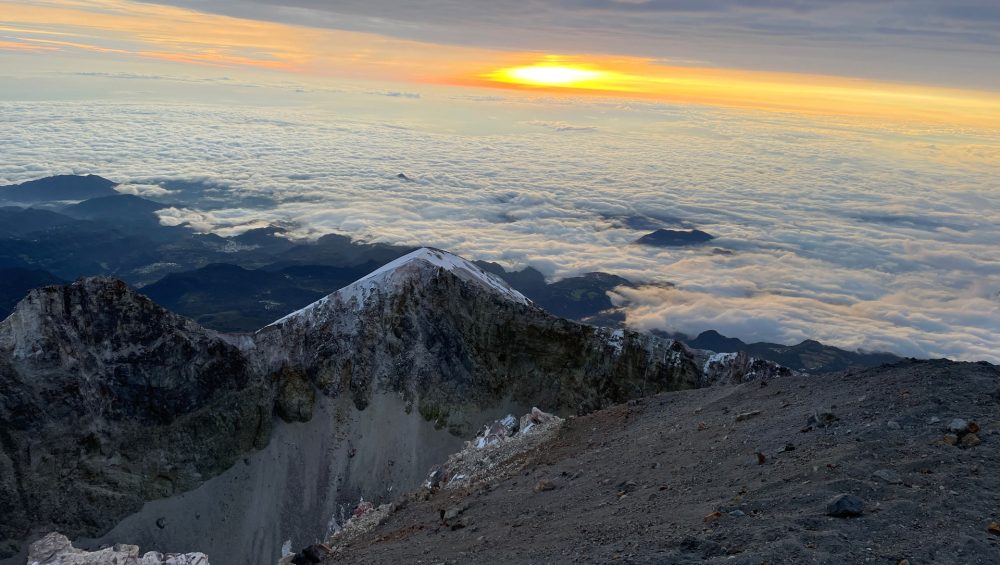Let's start with the basic measurements. In both cases we will base ourselves on the normal route; the Portillos route on Iztaccihuatl and the north face route on Pico de Orizaba.

Iztaccíhuatl measures 5,220 meters, and is usually climbed from approximately 3,970 meters from La Joyita, where the main parking lot is located. The vertical drop is, therefore, about 1,250 vertical meters. The estimated distance is fourteen kilometers, seven uphill and seven downhill.
The Pico de Orizaba measures 5,636 meters; the ascent usually starts from the Refugio de Piedra Grande, at 4,240 meters. La ganancia vertical es de unos 1,396metros. The vertical gain is about 1,396 meters. The total distance covered is also about fourteen kilometers.
The Pico de Orizaba Orizaba is objectively harder,as it requires overcoming a greater vertical gain at a higher altitude. In addition, the last five hundred meters of the Jamapa Glacier are inevitably uphill. As veteran Joaquín Canchola of Tlachichuca rightly says, "'El Pico is a madriza!" (climbing Pico is like taking a beating!).
However, to assess the overall difficulty or hardness, another fundamental factor arises: which descent is harder? After all, every mountain must be descended, once the summit has been reached.
On the other, on Iztaccihuatl, one must traverse the Ayoloco Glacier on a combination of ascending, descending, and even horizontal terrain (the well-known "Belly" of the glacier).
The answer is debatable, but many of us maintain that Pico de Orizaba is easier to descend than Iztaccihuatl. Why? Because the descent is a steady downhill, over relatively easy terrain, while Iztaccihuatl requires several partial ascents, such as Monte de Venus or La Rodilla, and semi-technical terrain around the Cruz de Guadalajara (4,900 meters). In general, the descent of Pico was faster and less strenuous than that of Mujer Blanca.
In addition, there are other factors to take into account. For example, the beginning of the Portillos route route is less steep than its equivalent on the Pico, which allows us to dose the effort. The state of the terrain, depending on the weather, is another factor that can make the ascent and descent of El Laberinto tremendously easy or highly complicated.
And you, fellow mountaineer, what do you think? Which is harder for you, Iztaccihuatl or Pico de Orizaba?



